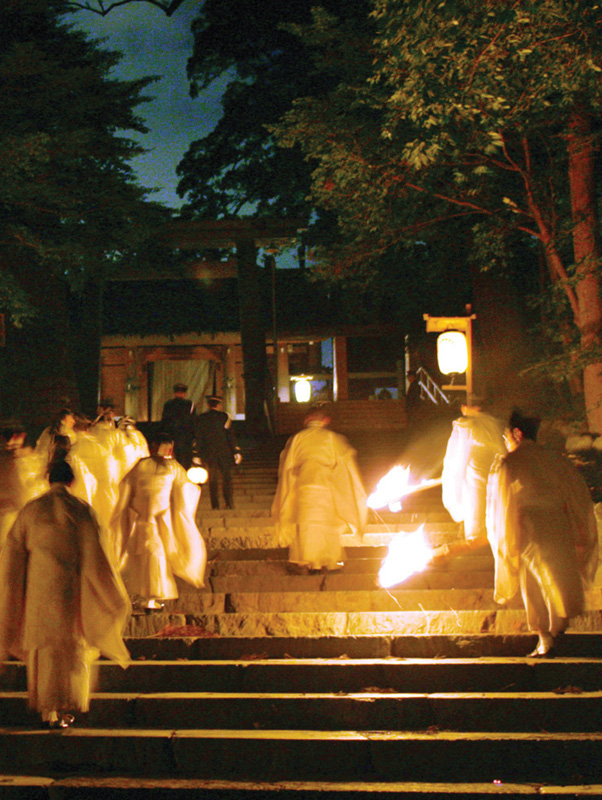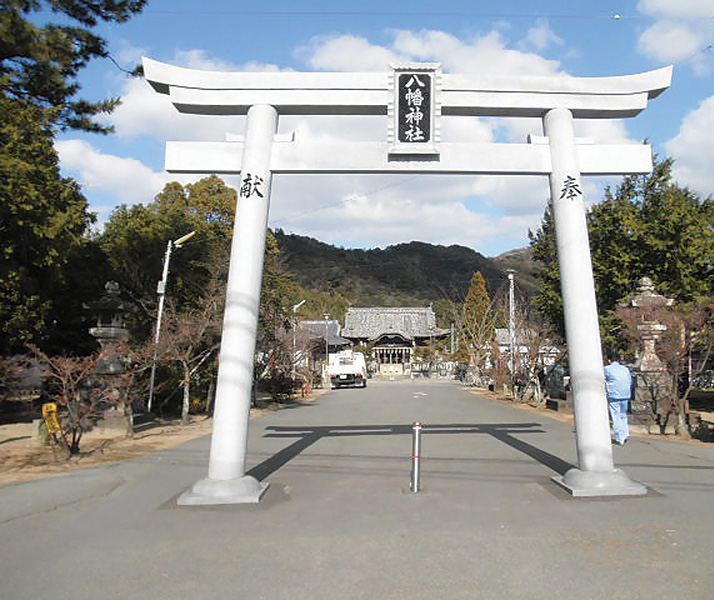
LOCATION Honshu, Japan
NEAREST POPULATION HUB Ise
SECRECY OVERVIEW Access restricted: the most sacred shrine of the Shinto religion.
Claiming some 120 million followers in Japan, Shinto is a Japanese system of beliefs and traditions that encourages devotion to spirits but has no central “god” figure. The shrine at Ise is so sacred to Shintoism that access to the inner sanctums is strictly regulated—in fact, only the high priest or priestess can enter the shrine, and he or she must come from the Japanese Imperial family.
The city of Ise on the central Japanese island of Honshu has a population approaching 150,000 but plays host to more than 6 million pilgrims each year. It is home to a complex of more than 120 Shinto shrines connected to two main shrines about 6 kilometers (3.8 miles apart: the Imperial Shrine (Kotai Jingu), also known as the Naiku, or Inner Shrine, and the Toyouke Shrine, or Geku (Outer) Shrine. Naiku is dedicated to Amaterasu Omikami (the Sun Goddess and purported ancestor of the Japanese Imperial family) while Geku venerates Toyouke Omikami (the Goddess of Agriculture).
The Inner Shrine lies in the shadow of Mount Kamiji and Mount Shimaji, next to the Isuzu River. It sits amid a forest thick with Japanese cedars and cypress trees. According to the eighth-century Nihon Shoki (Chronicles of Japan), the shrine was built around 2,000 years ago, its location having been selected by Yamatohime-no-mikoto, the daughter of Suinin, 11th Emperor of Japan. Yamatohime-no-mikoto was said to have spent 20 years wandering in search of a suitable site from which to worship Amaterasu. The goddess is reported to have informed her that Ise “is a secluded and pleasant land. In this land I wish to dwell.”

HOLY LIGHT Shinto priests in traditional robes prepare for the ceremony of Tsukinamisai, when prayers are made for a bountiful harvest. Toyouke Omikami, to whom the Outer Shrine is dedicated, is considered the Goddess of Agriculture.
The shrine’s traditional foundation date is usually given as 4 BC, but others have argued for some time later. It is believed that the first shrine building was erected in the seventh century. From the seventh until the 14th centuries, high priestesses (known as Saiō) were appointed from among the unmarried females of the Imperial family, the first of whom was Princess Oku. Later, during the Empire of Japan era in the 19th and 20th centuries, the role of high priest of the shrine was taken by the serving emperor. In the period after the Second World War, the honor fell to descendants of the Imperial family, both male and female.
Ise also purports to be the home of Yata no Kagami, a sacred mirror from the Imperial Regalia of Japan. It is one of three treasures of the regalia (the others being a sword and a jewel) and is said to represent wisdom. By tradition, these treasures are presented to each new Emperor at a private enthronement ceremony. They were supposedly brought to Japan by Ninigi-no-Mikoto, grandson of Amaterasu and a forefather of the Japanese Imperial dynasty.
Both the Naiku and Geku shrines are constructed from hinoki (Japanese cypress) wood and their roofs are thatched with kaya grass. The main Naiku shrine building measures some 11 meters by 5.5 meters (36 x 18 ft) and has a raised floor. Every 20 years since AD 692, the shrine has been completely rebuilt on one of two plots of land immediately adjacent to each other.
Even when a plot is in its two decades’ of disuse, it remains sacred ground and hosts a small hut housing a 2-meter (6.6-ft) wooden post around which the shrine will later be rebuilt. The post is called shin-no-mihashira, which roughly translates as “august column of the heart.” The cycle of reconstruction is considered to reflect Shintoism’s belief in death, renewal and impermanence. The next rebuilding is scheduled to take place in 2013, and will take a full eight years to complete.
Access to the Naiku comes via the Uji Bridge that traverses the Isuzu. At either end of the bridge are spectacular tori (traditional Japanese) gates. The main structures of both shrines are surrounded by high fences that allow onlookers only a glimpse of their thatched roofs. A no-photography policy is strictly enforced. Pilgrims, who are expected to wash their hands and mouths with water from a ritual pool, may offer prayers at a large gate nearby but can proceed no further. That is, of course, unless you can prove your familial links to the Imperial dynasty and talk your way into the job of high priest or priestess.

GATEWAY TO ENLIGHTENMENT One of the distinctive entrances to the Grand Shrine at Ise. The area gets particularly busy around the time of Oshogatsu (New Year), when believers come to praise the spirits and seek their blessing for the year ahead.